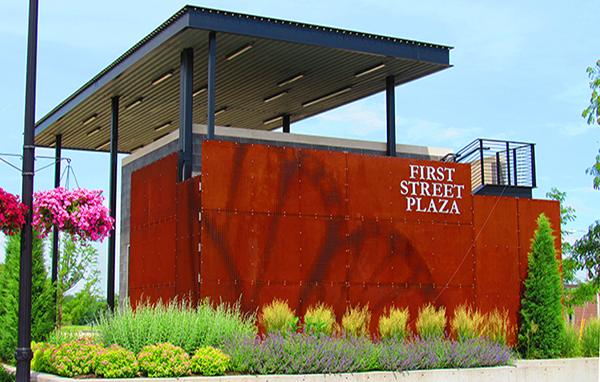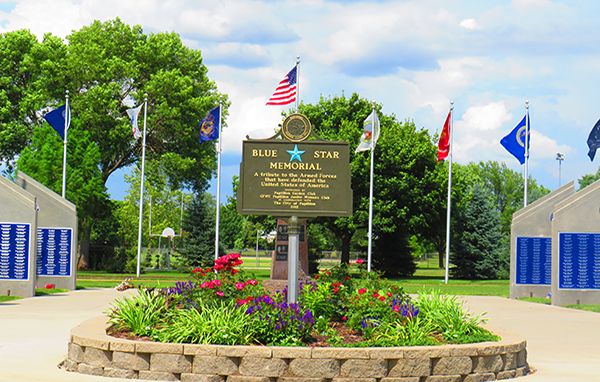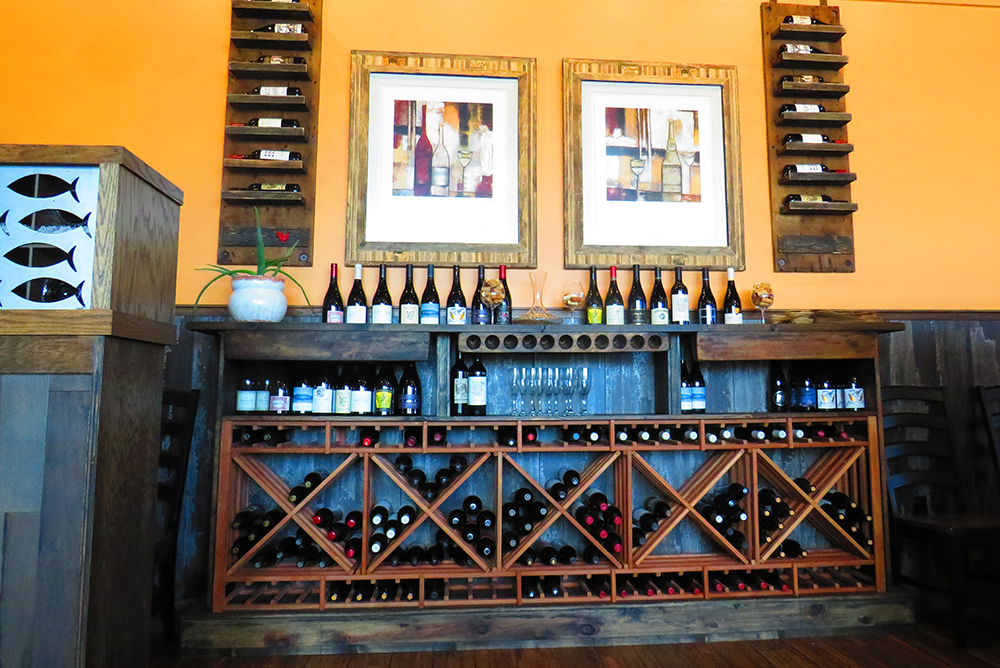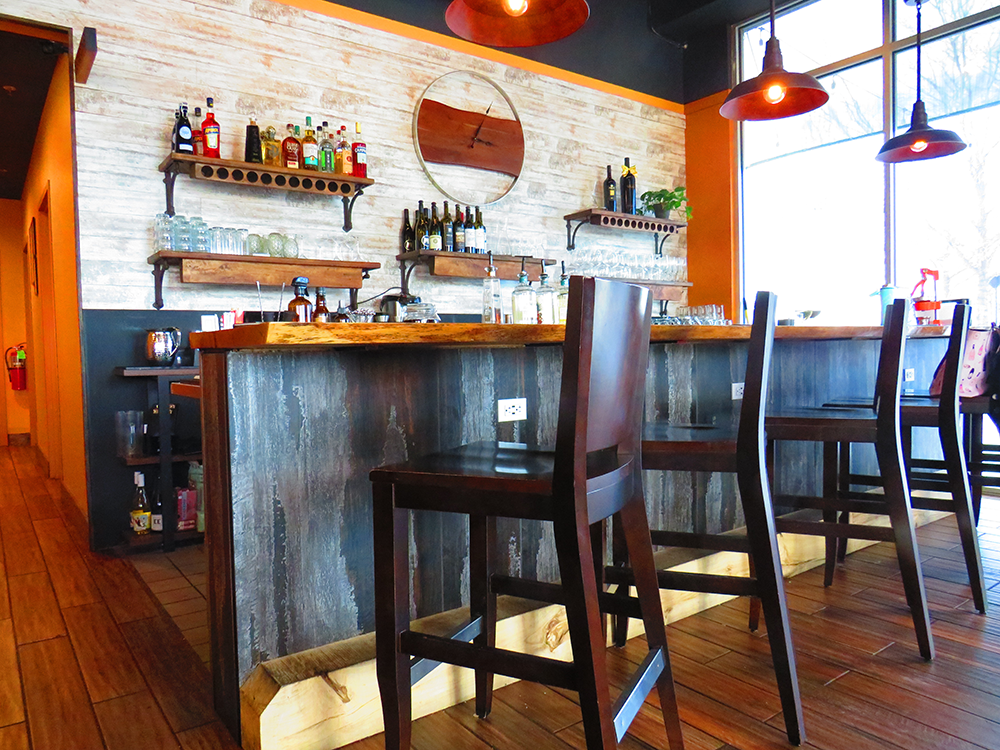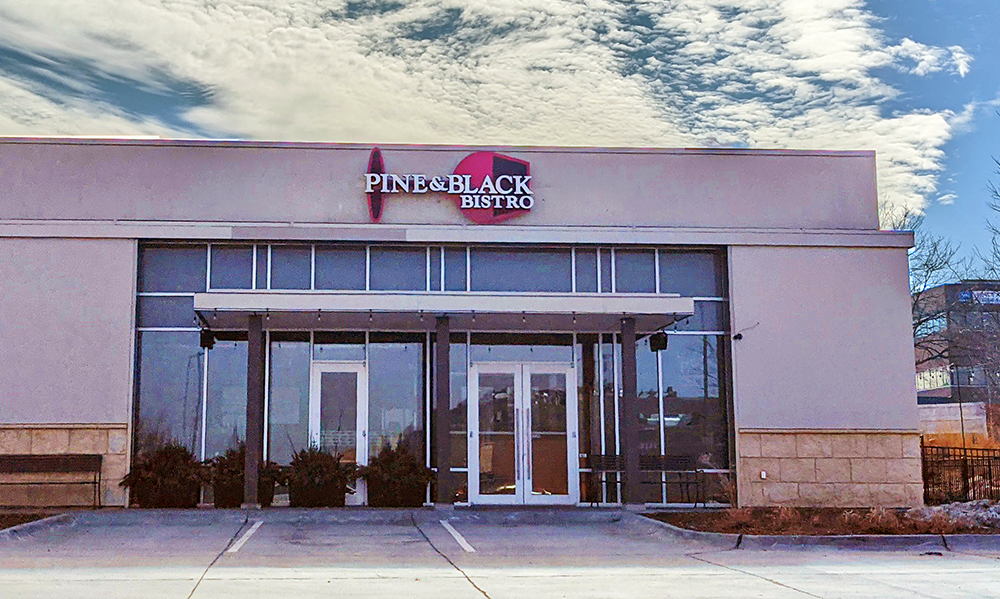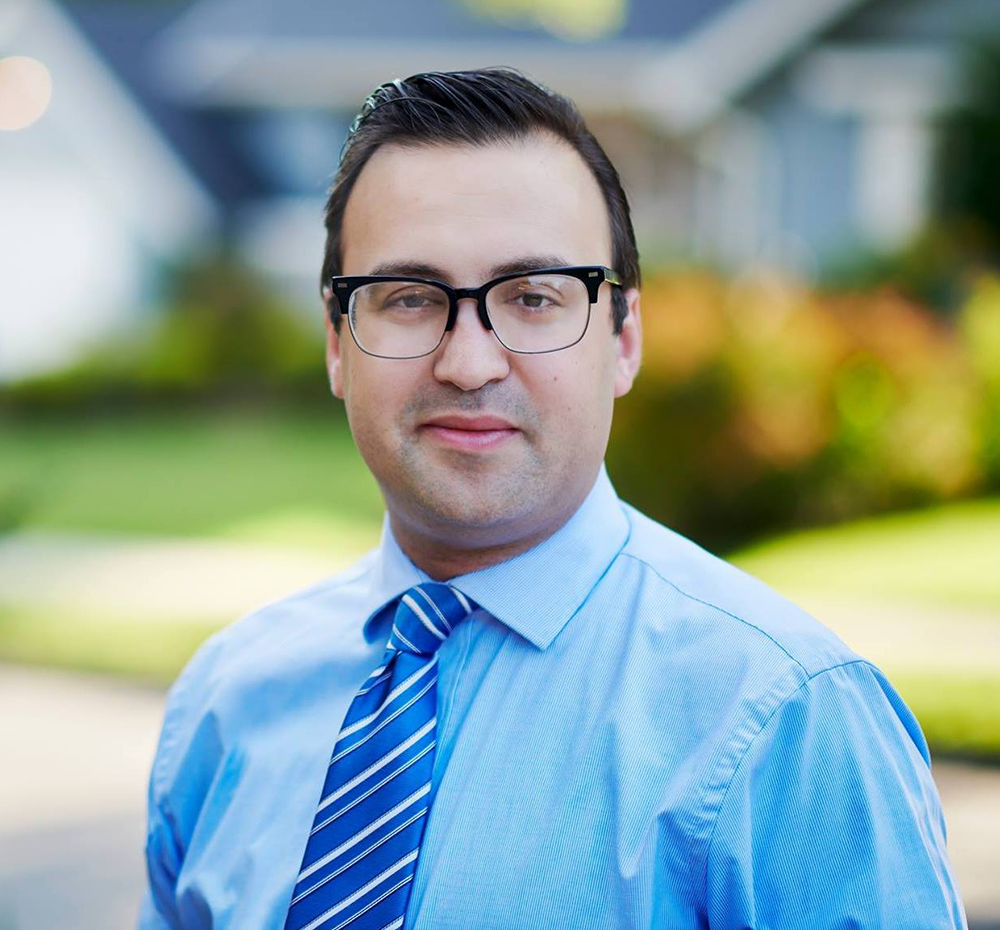There’s a lovely Papillion restaurant at Midland’s Place called Pine and Black Bistro. If you haven’t tried it you should.
Papillion Businesses Interview with Pine and Black Bistro’s General Manager, Brittany Love
Please tell us a little about coming here.
Our owners, Laura and Darrel Auld, moved back here [Nebraska] and opened a restaurant in Twisted Cork Bistro in 2008.
Then we opened our second restaurant out there. They had a mission to expand a little bit of what Twisted Cork was – Pacific Northwest to Omaha -and you’re seeing, you know, fishmongers and ranchers and as fresh and wild as possible, you know, naturally sourced food. And they wanted to expand that to really the Pacific Rim and Pacific coast. So, then we opened the Pacific Eating House in 2020, which was a terrible idea in March of 2020, because we closed in March of 2020 and then we opened in May of 2020.
I started this company in 2008.
Okay, so you understand,
I really understand.
Yes. We got that off the ground. We remodeled Twisted Cork and the owners have always wanted to be able to open something that’s kind of in their backyard. Their son Dillon just graduated from Papillion South this last year.
It’s great school, but it’s where my kids will go to. My oldest right now is in Prairie Queen, so she’s got a little time before she gets over there. But we all just love the Papillion Community.
My husband and I both are graduates of Monarchs. So, I mean, like we all have been in this community for quite some time.
So you have both sides [Monarchs and Titans] covered.
Exactly, exactly.
So when they [Laura and Darrel] had the opportunity to open this, it just seemed like a no brainer because we wanted something that you know, like I said, it’s in our backyard. We don’t have 25 minutes across town to go to the restaurants and things and it’s something we can share with our friends, families, loved ones in the area. But kind of keeping true to their testament of, you know, trying to serve as natural as possible, as wild as possible. Still going through local ranchers, so we do Morgan Ranch out of Burwell, Nebraska.
We also go through Certified Angus Beef for Greater Omaha. All of our fish -we are flying through the Honolulu Fish Company for our Ahi. And anytime we are able to run mussels and clams, oysters, things like that-we are flying that in. We only serve sockeye salmon and really fresh and good for you food – and trying to do it in a way that really no one else is in town, with that Pacific Northwest feel. Maybe you have a piece of salmon and a portion of veggies, but it doesn’t need to fill the entire plate – a healthy portion is what we’re trying to really get across.
We’ve had a lot of success with our owners’ knowledge of wine.
They are very, very partial to Pacific Northwest wines being Oregon, Washington branched out a little bit of added a lot of California in there too. So it’s been really a fine adventure trying to get this open and off the ground and, you know, working with the Papillion community is it’s very rewarding for me because my kids go here, you know, go here. It’s very nice to see so many people in the Papillion community, you know, really support us.
With our menu, we do have a steak and frites and our salmon that we give back to the bands for Papillion schools. so that every entree that is purchased of those is a $1 back to the schools.
So, I think we did this last year. I think each of the high schools ended up was like $600 which I mean it wasn’t our busiest year because we just opened at the end of March.
That’s pretty impressive.
I love how it is decorated inside.
That’s Laura. She is the envision behind everything. As far as like the shelving to anything that’s on the walls to the colors. She’s amazing. She also is our baker. She does our cookies and our Nanaimo bars. She makes all of those for all three restaurants as well so she stays very busy.
Wow.
Yes.
And then Darrell is the mastermind behind most items on the menu. And then we have our chef, Victoria Ruiz, come up with a few specials and those make the menu often as well.
We have such a great team.
So, there was a desire to definitely be in Papillion.
Yes.
Everybody’s from you and everyone is from Papillion and..
They’re technically from Seattle. I’m from California. So, you know, and then we all ended up back here.
I started working for the owners, oh gosh; it was 2013. I was managing a Starbucks, and I absolutely love Starbucks. Coffee was one of my passions. And they were my regulars. “You need to come work for us. Please come work for us.”
So, I finally went into Twisted Cork and this is when they just had the one restaurant. And I went in there. Like, oh my gosh, I need to work here. I love this place. I need to be here. So, I started the following week with them. I mean, that that was before I was engaged or married or had two kids or anything, you know, and so we’ve really had such a great connection over the years, which to me, speaks highly to them. I mean, there’s not another restaurant I can think of in this town that I was willing to spend almost 11 years of my life at you know.
They’re the best people. They really care about their employees and they care about their customers and the food that they’re serving and really have just, you know, that down to earth… Like a lot of times when you work at like a corporate run place, you have no idea who you’re working for. Right? Like you might know the CEO’s name, but there’s no, there’s no connection there.
They [Laura and Darrell] come into the restaurant, they are, you know, helping celebrate my kids’ birthdays or Christmas. It’s is definitely family run when you say like we own a small business. They are what encompasses that.
Wow. That is beautiful. That’s another reason why I like doing these stories. It’s so energizing and exciting to find people with passion for the community.
Oh, yes.
And the band program… I had no idea.
Yeah. We just have started that when we first opened because they wanted to be able to give back that they didn’t want to have to do it where it was like, oh, on Tuesday night to come in. So, they wanted to just like, you know, if we’re gonna do it, let’s just do it! And they picked two menu items that are some of our best sellers that really can get back.
That’s great.
The name of your restaurant? I read about it on the menu. But I’d love to hear you talk about the name.
Yes. So, Pine and Black is a direct translation of “Pinot Noir”. “Pine”, meaning pinot and “black” meaning noir. So our big thing at Bistro is “a little wine shop” [definition of bistro] essentially right? We have a more than a little bit of wine, right? That’s really what we want to be focused on is, you know, Pinot Noir pairs so nicely. It especially complements the food that we have on our menus. So, we try to really specialize in that. We have some really fun craft cocktails too, for those who don’t enjoy wine. And then we only do locally sourced beers as well. So, you can have everything from Lucky Bucket to Nebraska Brewery to Zipline, all the things you can think of that are everyone’s favorites.
On the wines, I’m sure you have some unusual kinds that we don’t see all the time.
A few of them we do we have something that I don’t see typically too often at other restaurants is a Pinot Blanc from Foris, and that is one of my favorite white wines that we ever carry. It just pairs so nicely with most of our seafood dishes and even some of the chicken dishes as well. Other than that, the varietals are pretty basic as far as like Pinot Noir, Cabernet, Merlot, but some of the some of the wines that we carry, you won’t find elsewhere. You know, some of them like Beaux Frères and Col Solare. Some of my favorite wines, but they’re not things that are easily accessed here in Nebraska. So, we do a really great job of sourcing and we have some great distributors that are always willing to bring those one offs in for us even in consulting a little six pack of wine and that’s all we have for the year. You know, we’re able to offer those specialty wines to our guests that definitely appreciate it.
It seems like there is always something special and surprising.
We try to. Absolutely!
This particular location has had other restaurants before.
Yes. It has. It was Sushi Karma when we took it over and then it was Wild Rice Sushi prior to I think it was something else before but it always had a little bit of like an Asian flair.
We really held true to most of the structure in here. We just redid the vestibule and then put up some little half walls, It just gives you a little bit break up of like where your main dining is, the tavern area and then we have a back section with some high top tables can seat eight people back there that we utilize often for larger parties
Do you need to reserve in advance for larger parties?
I recommend reservations even for parties for two or four especially at dinner just because in Papillion you never know what’s going on. Right? If there’s going to be a sporting event or something, we can get very busy very fast with no reservations on the books. So, I always think it’s the safer way to go, but I’m a planner.
Thank you.
============================================================================
Visit back tomorrow for Part Two-The Food!
Pine and Black Bistro
248 Olson Drive
Papillion NE 68046
402 999-8306
